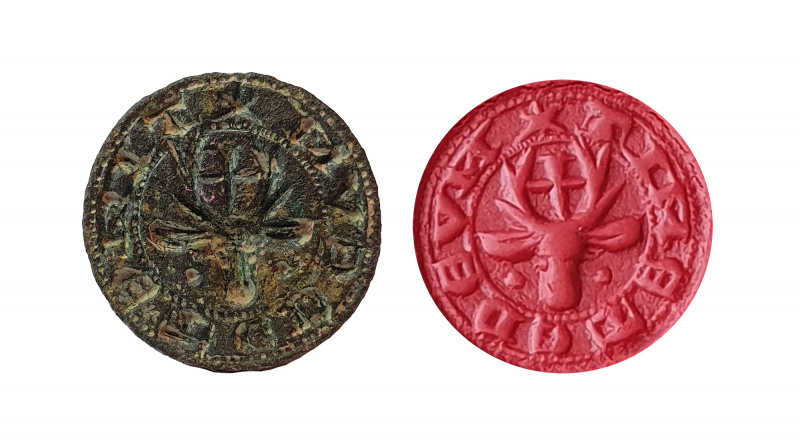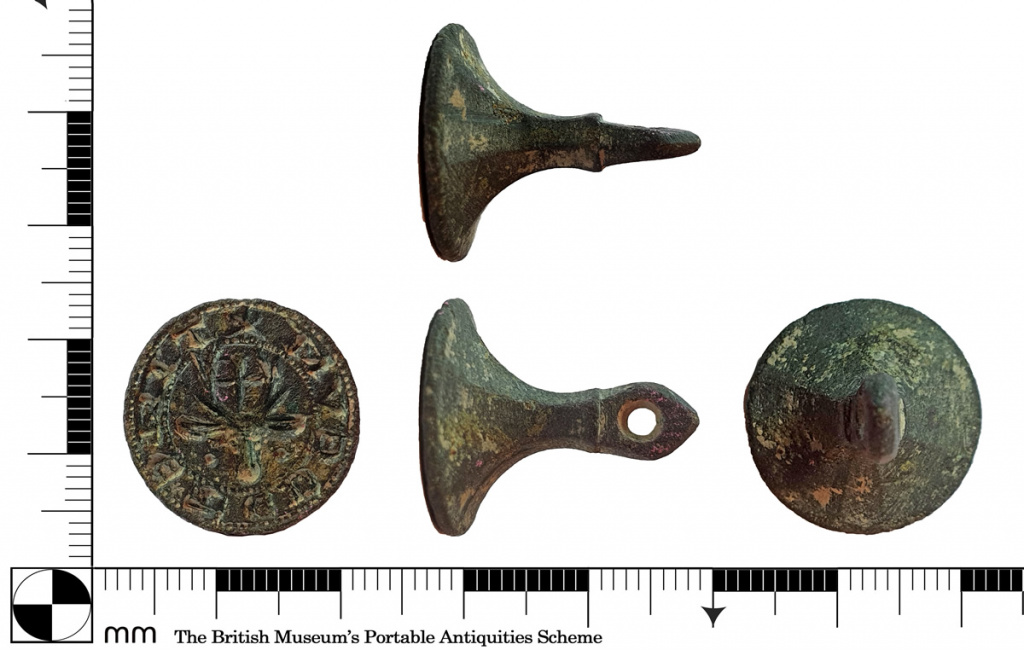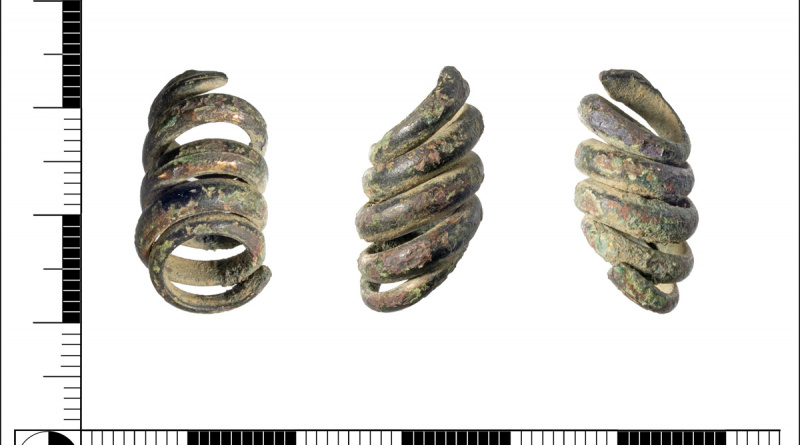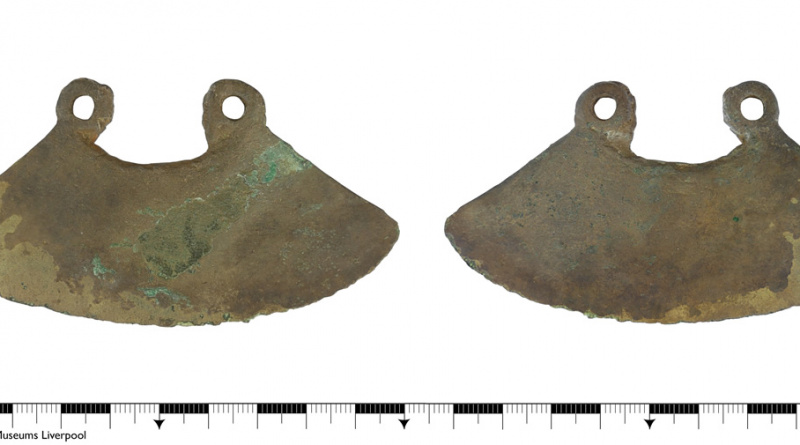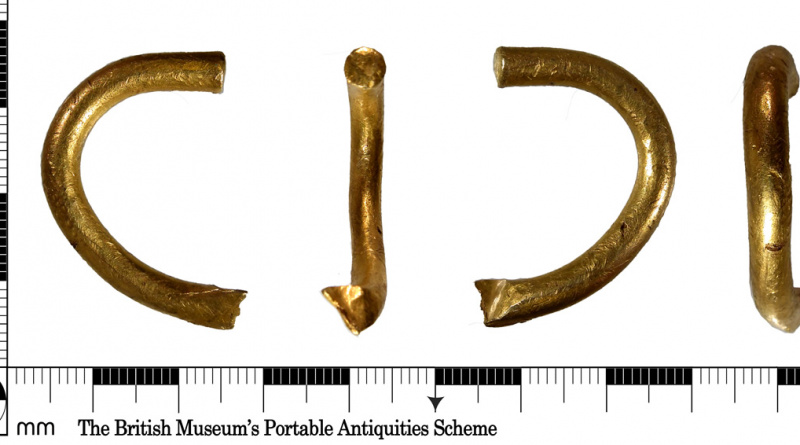PAS Finds: week ended 14 October 2022
PAS Finds: week ended 14 October 2022
My selection of the detecting finds (and one not found with a detector) recorded at the PAS in the week ended 14 October 2022
Featured Find
Seal matrix of stag’s head and cross
A seal matrix dating to c. 1250 – 1400 depicting a stag’s head with a cross between the antlers with the legend TIMETE DEVM (fear God). This is one of those “off the peg” impersonal matrices.
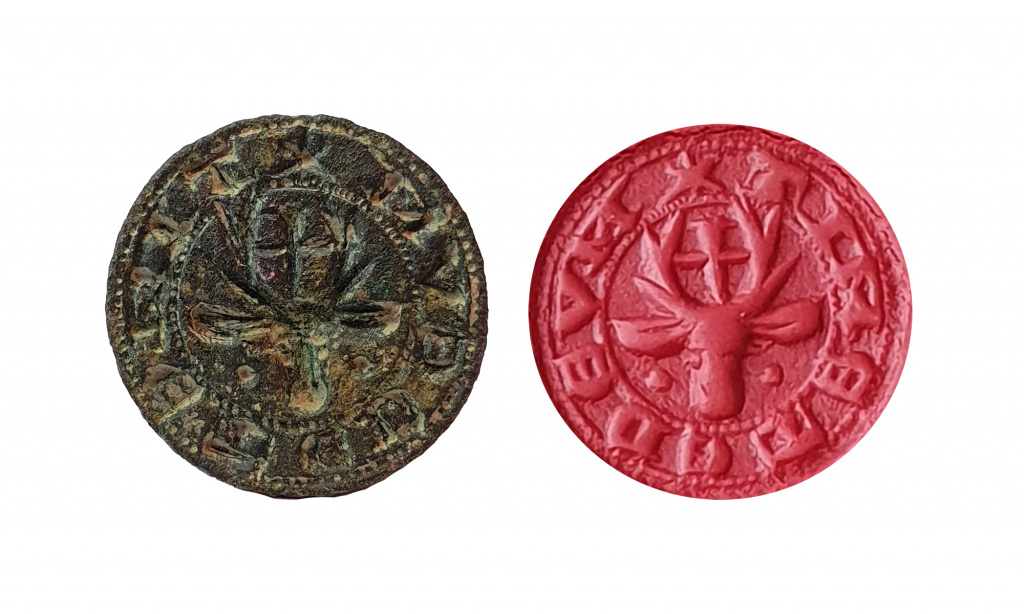
About half a dozen with a similar design and with varying legends are recorded at the PAS each year.
These records often point to an association with Saint Eustace and Saint Hubert.
Saint Eustace
Central to various versions of the story of Saint Eustace is that he was a pagan Roman general who converted to Christianity when he saw a vision of a stag with a cross between its antlers while out hunting. He was supposedly martyred in AD 118 by the emperor Hadrian. Aspect of his story are difficult to square with the known history of the time and he does not appear to have been venerated as a saint until the 7th century. This has led to the speculation that it is just the retelling of an older story.
Saint Eustace became very popular in the 12th and 13th centuries, with numerous adaptions of his story in verse and prose and at least ten different plays.
St Hubert
Hubert (or Hubertus) was a the first bishop of Liege in 708 AD.
The story goes that he was out hunting on Good Friday while the faithful were in church. He was pursuing a stag when he a crucifix appeared between its antlers and a voice told him to change his ways. It appears to be a retelling of the St Eustace legend; it appears to have only been attributed to Saint Hubert in the 15th century.1
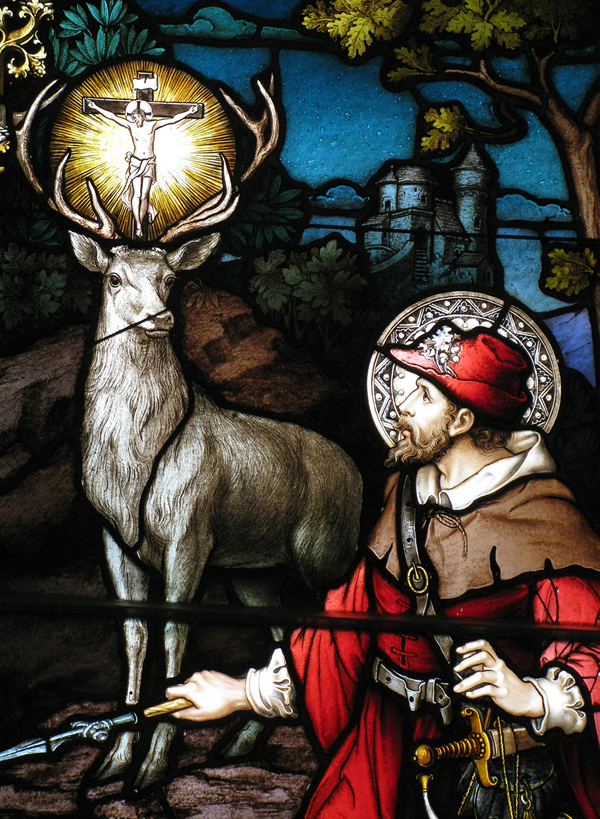
Photo: Wojciech Dittwald, CC BY-SA 3.0
Therefore, he was probably not the inspiration for the earlier dated seal matrices.
Jägermeister
In some versions of Hubert’s story the stag lectures Hubert to hold animals in a higher regard and have compassion for them. He was the patron saint of huntsmen and was honoured as the the originator of ethical hunting behaviour.

In 1935 Curt Mast, a German liqueur producer and keen huntsman, developed and sold Jägermeister (which translates from German to “Hunt Master”). Curt chose the image of the cross between the stag’s antlers to reference St Hubert and support ethical hunting.
Hertford College, University of Oxford
Curiously, the coat of arms of Hertford College, University of Oxford is also a stag with a cross between its antlers. However, it does not appear to be related to St Eustace or St Hubert.
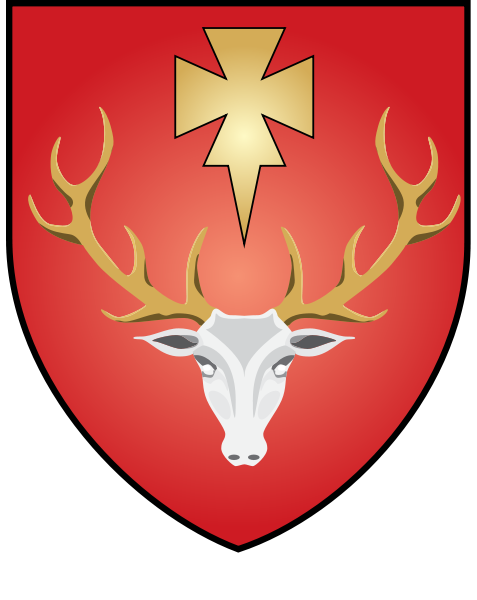
Instead it can be traced back to the origins of the college when an Elias de Hertford bought a property in Oxford to house students in about1283.
Elias’s personal seal (it bore the legend S’ ELIE DE HERTFORD) had the stag and cross design. It is likely that his design was chosen as a wordplay on his name and “hart” (a mature stag) particularly as the word “hart” is derived from the Middle English “hert”.

